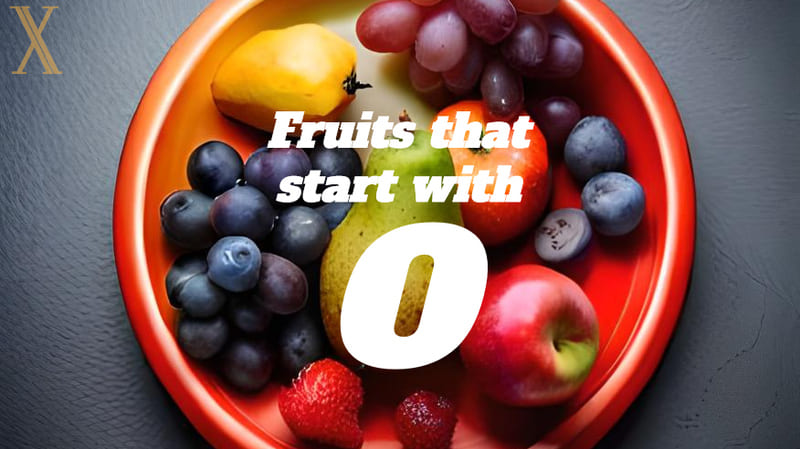
Discover the many fruits that start with L. Each of these fruits has unique flavor, texture, and health benefits, making them a delicious and nutritious addition to any diet. Let’s explore some of the most popular fruits that start with L and learn more about their uses, origins, and nutritional properties.
Lablab
Lablab purpureus, also known as lablab bean, hyacinth bean, or dolichos bean, is a legume primarily grown for its edible seeds, which can be used in various culinary dishes. The fruit and beans are edible if boiled well with several water changes, or it could lead to poisoning. The plant is native to Africa but is now grown in many parts of the world for food and ornamental purposes. The leaves are eaten raw or cooked like spinach. People eat the flowers raw or steamed. The root can be boiled or baked for food. In addition, the seeds are valuable for making tofu and tempeh.
Lady Apple
The Lady, also known as Api or Lady Apple, is a historic cultivar originating in Brittany, France, in at least 1628. Typical uses: dessert, cooking, cider making, and decoration, especially during winter holidays. The apple’s harvest time is from late August to early November. It gained popularity in America after being exported by European colonists. Despite its tiny size, it was priced much higher than other apple varieties after the American Civil War.
Lady Finger Grape
The lady finger grape, also known as the muscadine grape, is native to the southeastern United States. Its name relies on its elongated, finger-like shape. The skin of the lady finger grape is thick and tough, but the flesh is sweet and juicy. Making jams, jellies, and wines is one of its uses, but it is customary to eat them fresh. The lady finger grape is precious for its high levels of antioxidants, as well as other beneficial nutrients.
Lakoocha
Artocarpus lacucha, also known as monkey jack, lakoocha, or monkey fruit, is a deciduous tree with large leaves, orange-yellow male flowers, and reddish female flowers. Its fruits are usually round or irregular, velvety, dull-yellow with a pinkish tinge, and have a sweet-sour pulp commonly used for making curries or chutney. The tree is grown in tropical and subtropical climates and needs moderate watering and well-drained soil. It can tolerate some frost but is deciduous in winter. The male flower spike has an acidic and astringent taste and is sometimes pickled. The tree usually takes 4-5 years to bear fruit and typically yields in mid-summer.
Lambkin Melon
The lambkin melon is a small, sweet melon member of the muskmelon family. Its name is given to its lamb-like flavor and aroma. The lambkin melon has smooth, green, yellow skin and juicy orange flesh. It is often eaten fresh as a snack or dessert, but salads, smoothies, and other dishes are standard options too. The lambkin melon contains vitamins A and C, potassium, and other beneficial nutrients. It is also low in calories, making it a healthy addition to any diet.
Lancetilla Mango
Lancetilla mango is a type of mango that is native to Honduras. It is a large, oval-shaped fruit with smooth, thin skin that is green when unripe and turns yellow when it ripens. The flesh of the Lancetilla mango is firm, juicy, and sweet, with a rich, tropical flavor. It is commonly eaten fresh, sliced, and added to salads or made to make desserts and smoothies. This mango variety is known for its high fiber and antioxidant content, making it a nutritious addition to any diet.
Langra Mango
Banarasi Langra, commonly known as langra mango, is a widespread variety of mango originating in India. It is a medium-sized fruit with thin, greenish-yellow skin, sometimes tinged with red. The flesh of the Langra mango is soft and juicy, with a sweet and tangy flavor. This mango variety is commonly eaten fresh, sliced, and added to salads or used to make chutneys and pickles. It is also popular in desserts like mango pudding and ice cream.
Langsat
Lansium parasiticum, commonly known as langsat, lanzones, or longkong, is a small, oval-shaped fruit native to Southeast Asia. It has a thin, leathery yellow or light brown skin that is easy to peel. The flesh of the langsat is white and juicy, with a sweet and tangy flavor similar to that of a grape. The fruit is commonly eaten fresh or used in desserts, jams, and jellies. Regarding its health benefits, some people claim it improves digestion, boosts the immune system, and reduces inflammation.
Lantana
Their common names are shrub verbenas or lantanas. Lantana berries are small, round fruits produced by the lantana plant, a tropical shrub native to America and Africa. The berries are small, ranging in color from green to purple, and have a slightly sour taste. They are commonly used in traditional medicine to treat various ailments, including digestive issues, inflammation, and fever. However, it is essential to note that the lantana plant is also toxic and can cause adverse reactions if ingested in large amounts.
Lanzones
Another name for the langsat. See Above.
Lapsi Fruit
Choerospondias axillaris, known as the Nepali hog plum, Lapsi, or Aamli, is a tropical fruit commonly found in Nepal, India, and Southeast Asia. The fruit has a yellow-green outer skin but turns brown when ripe and a juicy, tangy, sweet pulp with a fibrous texture. The fruit is rich in Vitamin C, minerals, and antioxidants, making it a healthy and delicious snack. Lapsi fruit is commonly used to make a sweet and sour chutney with rice, lentils, or meat dishes. It is also used in pickles, jams, and jellies. In addition, it is supposed to have medicinal properties, so Ayurvedic and Unani use it to treat digestive, fever, and respiratory problems.
Lardizabala
Lardizabala biternate, also known as the Chilean Wineberry, Lardizabala, or Coguil, is a rare and exotic fruit that grows in the Andes Mountains of South America. The fruit is small and a bit oval, with bright red-green or yellow skin and a juicy, sweet, and tart flesh that tastes like a raspberry. Lardizabala fruit is high in antioxidants, Vitamin C, and minerals, making it a healthy addition to any diet. You can use this fruit to make jams, jellies, and sauces to complement cheese or meats. In addition, the plant has a high value for its ornamental value, with its attractive foliage and delicate flowers adding beauty to any garden.
Last Chance Peaches
Last Chance peaches, also known as Fresno peaches, are a late-season variety of peaches grown in the San Joaquin Valley of California. The fruit has a yellow-orange skin with a red blush and sweet, juicy, and fragrant flesh that is perfect for eating fresh or using in baked goods. The peach is high in Vitamin C, fiber and a good potassium source and other minerals. Last Chance peaches are famous for their rich flavor and delicate texture, excellent for jams, jellies, and preserves.
Le Conte Pear
The Le Conte pear is a deciduous tree that can reach a height of 8 meters and is not sensitive to frost. Its hermaphrodite flowers rely on insect pollination. The fruit resembles Asian pear; you can eat it raw or cooked. You could also store it for several days to several months. The fruit is up to 8cm long and 5cm wide. The pear was introduced to Georgia in 1856 by John Eatton Le Conte, giving its name to the apple.
Lemon
Lemon is a citrus fruit widely used in cooking and known for its tangy and sour taste. The fruit has a bright yellow, thick outer skin and a juicy, acidic, refreshing flesh high in Vitamin C and antioxidants. Using lemon to flavor various dishes, including salads, marinades, desserts, and drinks, is common. Also, you can use the juice of the lemon to make lemonade, a refreshing and healthy beverage. The essential oil from the lemon peel is also used in aromatherapy, as people claim to have a calming effect and help with digestion. Lemons are a versatile and healthy fruit you can enjoy in many ways.
Lemon Aspen
Acronychia acidula, commonly known as lemon aspen or lemon wood, is a citrus fruit native to Australia. It is a small, round fruit that resembles a lemon but with a bright yellow color and a slightly sweeter flavor. It is a popular ingredient in many Australian dishes, especially jams, sauces, and desserts. The fruit is rich in antioxidants, vitamin C, and other nutrients, making it a healthy addition to any diet.
Lemon Drop Mangosteen
Garcinia madruno, also known as charichuela, is a fruit tree species native to the rainforests of Central and South America. The fruit looks like a shriveled droopy lemon. It has a similar rind, sometimes called a lemon drop mangosteen, with a soft white pulp that has a slightly citrusy taste. People often compare it to sweet santol fruit or lemony cotton candy. The tree is adaptable to various soils, even poor ones or heavy clay, and takes 5 to 7 years to produce fruit. However, it requires protection from frost when young and will not bear fruit in cold areas. The fruit is not well known outside of South America, and a few backyard growers in South Florida.
Lemon Guava
Psidium cattleyanum, known as yellow cattley guava, yellow strawberry guava, yellow cherry guava, lemon guava, and in Hawaii as waiawī, is a tropical fruit native to South America. It is a small, round fruit with a yellowish-green skin and a sweet, tangy flavor. The fruit is rich in vitamin C, fiber, and other nutrients, making it a healthy snack or ingredient in smoothies, jams, and desserts. The fruit is also used in traditional medicine to treat various ailments, including diarrhea, fever, and cough.
Lemon Myrtle
Backhousia citriodora, commonly known as lemon myrtle, is an evergreen plant found in subtropical rainforests of central and south-eastern Queensland, Australia. It can grow up to 6 meters tall and has glossy green leaves with an entire margin. The plant has two essential oil chemotypes: citral and citronellal. Citral is the more prevalent one used for flavoring and essential oil. Indigenous Australians have long used lemon myrtle in cuisine and as a healing plant. It is considered to have a “cleaner and sweeter” aroma than comparable sources of citral. In addition, lemon myrtle has antioxidant properties and works as an anti-microbial agent, with the potential to be used as a surface disinfectant or as an anti-microbial food additive.
Lemonadeberry
Rhus integrifolia, also known as lemonade sumac or lemonadeberry, is a shrub to small tree native to Southern California and north-central Pacific coastal Baja California. Member of the chaparral plant, can grow up to 8 meters in height with a sprawling form. The plant has simple, alternating, evergreen, and leathery leaves that are toothed and fragrant flowers that appear from February to May. The fruit is sticky and reddish, and the plant thrives on well-drained soils and endures heat and windy conditions. Lemonade berry leaves are rich in tannins; people use the fallen leaves as a brown dye or mordant. In addition, the plant’s oil can be extracted from its seeds and used to manufacture candles.
Lemonade Fruit
Lemonade fruit (Citrus limon x reticulata) is a sweet citrus fruit believed to be a hybrid between a mandarin orange and a lemon. It was discovered in New Zealand in the 1980s as a chance seedling and is grown mainly in warmer parts of the country and Australia, California, and Florida. The fruit resembles a lemon but is round instead of ellipsoidal, with a smooth yellow rind easily peeled by hand. The flesh is sweet with some acidity and contains 9 to 11 segments with few to no seeds.
Li Jujube
Li jujube, also known as Chinese date or red date, is a small fruit native to China. The Chinese have cultivated it for thousands of years for its medicinal and nutritional properties. Li jujubes are oval-shaped with a thin, edible skin that ranges from light green to red when ripe. The flesh is white and crispy, and the seed is tiny and easy to remove. Li jujubes are rich in vitamins, minerals, and antioxidants, making them a popular ingredient in traditional Chinese medicine. In addition, the natives say it helps to improve digestion, boost the immune system, and promote relaxation.
Liberty Apple
The Liberty apple is a disease-resistant apple developed in the United States in the 1970s. It has bright red skin, a juicy, crisp texture, and a sweet-tart flavor. The Liberty apple is excellent for eating fresh or cooking and baking. It is resistant to apple scab, a common disease that can cause unsightly blemishes on apples and other fungal infections. The Liberty apple is also resistant to fire blight, a bacterial disease that can kill apple trees.
Lilikoi
Lilikoi is the Hawaiian name for passion fruit, a tropical fruit native to South America. It has rough, wrinkled outer skin ranging from yellow to purple. Inside, the fruit has a sweet, juicy pulp and tiny black seeds. Lilikoi is a rich source of vitamin C, fiber, and antioxidants, making it a healthy addition to any diet. You can use it in drinks, desserts, and sauces; if you eat it raw, you will enjoy it too.
Lilly Pilly
Syzygium smithii, also known as Lilly Pilly, Chinese Apple, coast satinash, and Eungella gum, is an evergreen tree belonging to the Myrtle family and native to Australia. It can grow up to 20m tall and has rough, woody bark and cream and green smooth, waxy leaves. The plant is planted as shrubs or hedgerows and produces white to maroon edible berries. Its dark green shiny leaves are arranged oppositely on the stems, measuring 2–10 by 1–3 cm. The cream-white flowers appear from October to March, and berries follow from May to August. The tree is widely known as Acmena smithii.
Lime
Lime is a small, green citrus fruit with a sour and acidic taste widely used in cooking and beverages. People commonly use it as a flavoring agent in dishes such as marinades, sauces, and cocktails. Limes are also a good source of vitamin C and other nutrients. There are several varieties of limes, including Persian limes, Key limes, and Kaffir limes, each with a distinct flavor and aroma. Regarding harvesting, it occurs when limes are still green but can also turn yellow when fully ripe. They can be stored at room temperature or in the refrigerator for several weeks.
Limeberry
Triphasia trifolia, also known as lime berry or sweet lime, is a spiny evergreen shrub native to tropical south-eastern Asia. It is grown for its edible fruit, which is a red, sweet, and pulpy hesperidium with a flavor similar to a lime. The plant has been introduced to many subtropical to tropical regions; therefore, it is natural to see them on several islands in the tropical Pacific Ocean. It is also used as a bonsai plant and has the potential as a commercial fruit crop in authentic tropical locations. In addition, the leaves of the limeberry plant have anti-microbial properties and have been used in traditional medicine to treat lung cancer and pneumonia.
Limequat
Limequat is a hybrid citrus fruit cross between a lime and a kumquat. It is small and oval-shaped, with a bright green color and a tangy and acidic flavor. People often use limequat in cooking and baking, which can be used instead of limes or lemons in recipes. In addition, it is a good source of vitamin C and other nutrients. Limequat trees are relatively easy to grow and produce fruit throughout the year, making them a popular choice for home gardeners.
Lingonberries
Vaccinium vitis-idaea, lingonberries, partridgeberries, mountain cranberry, or cowberries are small, red berries that grow on low shrubs in the Northern Hemisphere. Although the lingonberries taste slightly tart and almost like every fruit, you can use them in jams, sauces, and desserts. Lingonberries are an excellent source of vitamins C and K, antioxidants, and other nutrients. In addition, the Vikings believed these berries have health benefits, such as reducing inflammation and improving heart health. Lingonberries are a popular ingredient in Scandinavian cuisine, and they are often served with meat dishes, such as Swedish meatballs.
Lodi Apples
The Lodi is a hybrid apple cultivar created from the ‘Yellow Transparent’ and ‘Montgomery Sweet’ cultivars and was introduced in 1924. It is primarily grown in the Southern United States and has a light green peel People commonly use it for cooking and making applesauce.
Loganberry
The loganberry is a hybrid fruit developed in California by crossing black and raspberries. It is similar in appearance to a large, elongated raspberry, with a deep maroon color when ripe. Loganberries have a tart, slightly sweet flavor and are commonly used in jams, jellies, and pies. They are rich in vitamins C and K and fiber and are a popular choice for home gardeners due to their ease of cultivation.
Longan
The Longan is a small, round fruit native to China but is also grown in other parts of Asia and tropical regions worldwide. The fruit has a thin, brownish-red skin that you can peel easily, revealing a translucent, white fruit similar in texture and taste to a grape. Longans have a sweet, musky flavor, and it is common to see them in desserts, drinks, and other dishes in Asian cuisine. They are also rich in vitamin C, iron, and other antioxidants.
Loquat
Loquat is a small, round fruit that is native to China but is also grown in other parts of Asia, as well as in Europe and North America. The fruit has a thin, orange-yellow skin and a juicy, sweet-tart flesh similar in flavor to a mix of peach and apricot. Loquats are commonly used in jams, jellies, and other preserves and can also be eaten fresh. They are a good source of vitamins A and C, fiber, and other nutrients. In addition, the loquat tree has a high value for its ornamental qualities, with its glossy green leaves and delicate white flowers.
Lucuma
Lucuma is a fruit that is native to the Andean valleys of Peru. It has a green, hard outer shell that is tough to crack, revealing bright orange flesh inside. This fruit is sweet and has a unique taste similar to sweet potato or maple syrup. Lucuma is an excellent ingredient in baking, so it is common to see them in desserts like ice cream, custards, cakes, and pies in Peru and other South American countries. The fruit is also packed with vitamins and minerals like vitamin B3, iron, and calcium, making it a healthy addition to any diet.
Lulo
Solanum quitoense, known as naranjilla in Ecuador, Costa Rica, and Panama, and lulo in Colombia, is a tropical perennial plant from northwestern South America. The plant has large elongated heart- or oval-shaped leaves up to 45 cm long. It produces a fruit with a citrus flavor, described as a combination of rhubarb and lime. The juice of the naranjilla is green and is often used as a juice or for a drink called lulada. The plant is delicate and requires protection from strong winds and direct sunlight, and it grows best in partial shade.
Lychee
Lychee is a tropical fruit native to China but is also grown in other countries like India, Thailand, and Vietnam. It has a rough, reddish-brown outer skin (that you can easily peel), revealing a white and juicy flesh inside. The fruit has a sweet and floral taste with a hint of tartness. People use it in desserts like ice cream, sorbets, and jellies. The fruit is also rich in vitamins C and B and minerals like potassium and copper, making it a healthy addition to any diet. Lychee is a popular fruit during the summer season, and you can enjoy it as a refreshing snack.
-

The A-List of Fruits: A Journey Through Fruits that Start with A
-

Fruits that Start with B: A Guide to the Best of the Bunch
-

Discover the Sweet World of Fruits That Start with C
-

Fruits That Start with D: Discovering Exotic Flavors
-

15 Fruits That Start With E: A Delicious Guide
-

23 Fruits that Start with F: A Guide to Nutritious Options
-

Fruit Alphabet: Discovering Fruits that Start with G
-

Fruits that start with H: From Habanero Pepper to …
-

22 Fruits That Start With I: Nutritious and Medicinal Treasures
-

25+ Fruits that Start with J: A comprehensive list
-

35+ Fruits that Start With K (with a short description)
-

Fruits that Start with L: From Lablab to Lychee
-

The Mighty M’s: A Guide to Fruits That Start with M
-

Fruitful N: Discovering Exotic Fruits That Start With N
-

The Encyclopedia for the Fruits That Start with O
